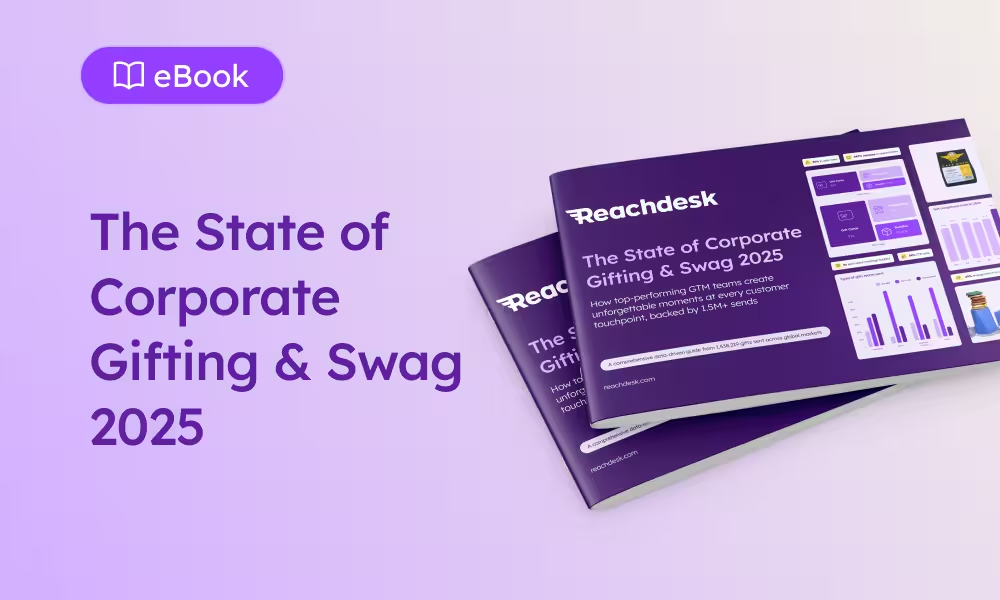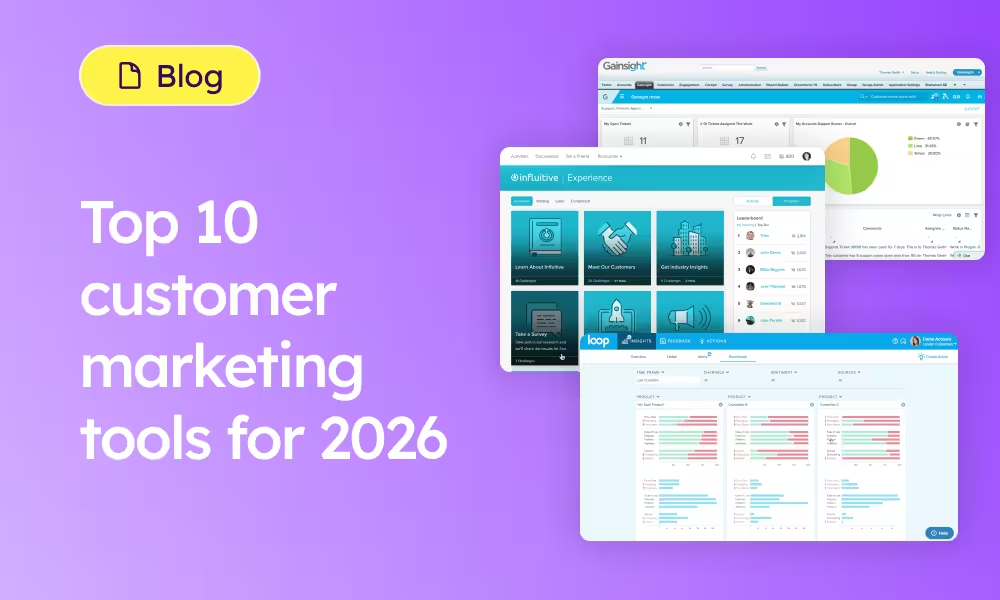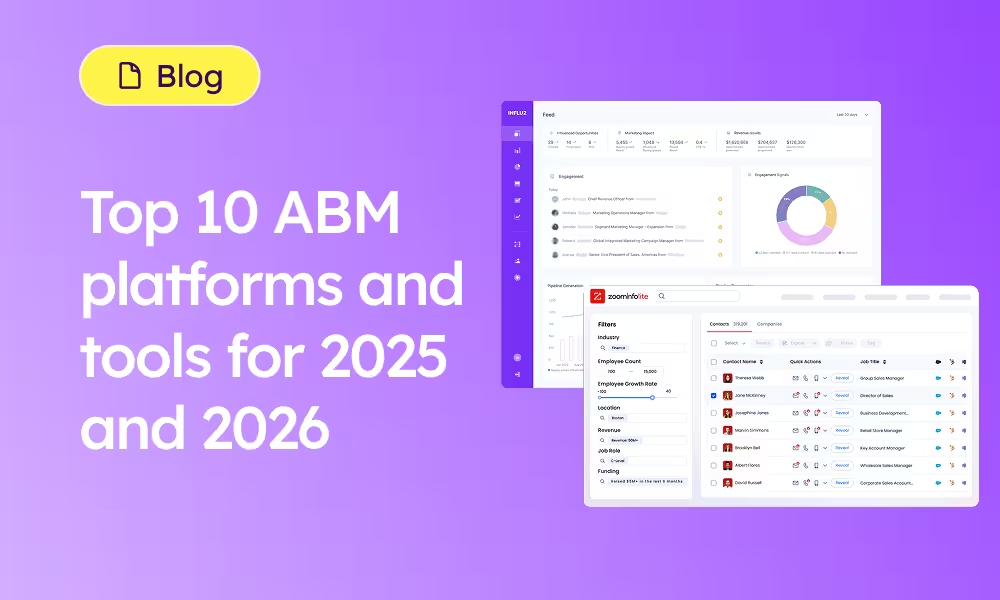One powerful platform for ROI-driven corporate gifting, swag, and engagement at scale.
If you’re a marketer, you’ll likely be spending Q1 planning for the year ahead.
As you decide on your objectives and key results or OKRs as they are known, for the next year, you need to make decisions about your marketing priorities. Whether you want to generate more prospects or increase brand awareness, your approach to achieving these goals should involve deciding on which marketing metrics to pay attention to. In this article, we’ll explain which marketing metrics you should track across the marketing funnel from awareness to conversion and why they’re important for measuring success.
Awareness stage
Social media: brand awareness
The influence that social media has on consumer buying habits is only growing - 56% of consumers say that they’re more influenced by social media images and videos when online shopping than they were pre-pandemic. So, if you’re not tracking the impact that social media is having on your brand awareness at the very least, then you could be missing out on key opportunities to understand your audience.
Although it can sometimes be tricky to quantify the success of your marketing efforts using social media metrics, they can be a good indicator of brand awareness. Some metrics you could look at include:
- Social media reach
Reach on social media refers to the number of people who have viewed your content. Reach can vary depending on whether your social media efforts are organic or paid, but generally, the bigger your reach, the bigger your audience, and the more influence your brand will have. If you’re gaining new followers and your posts are being shared, your reach will increase, and therefore your marketing efforts are paying off.
Paying attention to reach on social media is important because it’s a key indicator of how many people are responding to your content and more broadly, your brand.
- Social media impressions
Impressions are how many times your content has been viewed, which can include multiple views from the same person. So if your posts are being viewed again and again by the same people, this demonstrates that your content is memorable and captivating for your audience.
- Social media engagements
Tracking engagement rate involves looking at interactions such as likes, comments and shares. Although seen as a vanity metric by some, social media engagement rate is a good indicator of how well your brand resonates with your audience online. High engagement rates demonstrate that your brand has a strong understanding of its online audience and is also great for reach and creating brand awareness too.
Website traffic
Knowing how much traffic is coming to your website and where it’s coming from is key to understanding how your prospects are finding you and how many of them are converting into customers.
The health of your website traffic is often an indicator of how effective your marketing efforts are shaping up to be - from your paid ads campaigns on social media to your SEO work, and can be a measure of brand awareness. Measuring the sources of your website traffic can also help you learn where to invest your marketing budget.
There are a few types of website traffic sources you can choose to analyze, including:
- Direct traffic
This refers to the visitors of your website who get there by entering the URL into their browser. Direct traffic can also include traffic whose source can’t be directly verified. Measuring direct traffic shows how many prospects are coming straight to your website, which helps to measure intent to buy.
- Referral traffic
Visitors who have arrived at your website as referral traffic will have found your product or service through another site, most likely through a mention or a link. Getting lots of referral traffic is a good sign that your brand is being mentioned and promoted in the right places online, namely from other websites that have a similar target audience.
By looking at referral traffic, you can identify exactly where these referrals are coming from, hone in on your audience’s interests and optimize your site and content accordingly.
- Organic search traffic
Organic traffic comes from those who enter keywords into a search engine like Google and find your website. This could happen through helpful resources like blog posts or downloadable content. Visitors to your website who come through organic traffic often have specific intent, so your job is to answer the specific questions they have and provide them with the solution they’re looking for.
Looking at the volume of organic traffic your website receives can be a marker of how successful your SEO efforts are. The higher your blog posts are ranking on Google, for example, the more relevant they are to those who are searching and the more likely you are to attract potential prospects.
- Paid search traffic
This is the traffic that comes from PPC campaigns from Google Ads. Keeping an eye on this traffic source helps to show how effective the messaging for your ads is, as well as how cost-effective they are. If the cost of your ads is high and conversions are low, it may be worth tweaking your ad copy or running A/B tests to learn more about what works and what doesn’t.
- Email traffic
Just as you’d expect, this type of traffic comes from your email marketing campaigns. High traffic from this source indicates that your email campaigns are effective and engaging because they’re encouraging your targets to find out more about your business through your website.
- Social media traffic
Social traffic comes from your brand’s social media channels and could be organic or through paid ads. Measuring the volume of social media traffic coming to your website indicates the success of your social media content - the higher the traffic from social media, the more engaging and effective your posts likely are, as they are encouraging users to find out more about your business on your website.
Once you have the intel on which channels are generating the most traffic, you can zero in and optimize them, so you can maximize the visits you get and, ultimately, the number of conversions.
Consideration stage
Leads captured
A full pipeline is the lifeblood of any business, particularly those in B2B. Without leads, growth just wouldn’t be possible. However, not every business uses the word ‘leads’ to describe them. In account-based marketing, for example, the word ‘prospects’ is preferable. This is a view shared by many in the SaaS space, too.
The type of leads that you’ll be trying to generate will depend on the nature of your business and the kind of marketing that you do. The types of leads that could be useful to track include:
- Marketing Qualified Leads
You would measure the number of MQLs received to ensure that you’re spending your marketing budget on the right people - the audiences that are most likely to convert to paying customers. Understanding your MQLs also helps marketing to refine the content that they’re creating to attract leads and will ultimately lead to a lower cost per acquisition and a more efficient transition through the sales funnel. Always keep an eye on the number of qualified leads that you generate and be aware of any dips or spikes in this figure - check these figures monthly.
Pro Tip: To prevent churn and help you evolve your strategy in the future, make sure that your MQLs align with your ideal customer persona.
- Sales Qualified Leads
Although measuring SQLs may sound like more of a job for the sales team, it can reflect on the performance of the marketing team, too, as they are the ones setting up the sales team for success by qualifying the leads. Ultimately, looking at SQLs can help to determine how successful your marketing team’s messaging has been within the sales process, as well as determine how aligned your sales and marketing teams are.
Conversion stage
Marketing sourced revenue and pipeline
Keeping track of marketing sourced revenue and pipeline is a good way to show how influential your marketing team’s initiatives have been in the overall buyer journey.
To monitor marketing sourced revenue and pipeline, do some digging into:
- Sales
How many deals can be directly attributed to marketing?
- Upsells
How influential was marketing in these opportunities?
- Renewals
Can marketing initiatives be attributed to customers choosing to renew?
ROI
Return on investment is the holy grail of marketing metrics. Why? Because it shows a direct correlation between actions taken and resulting growth and profit earned.
When measuring ROI related to marketing initiatives, you could take a more granular approach by breaking down:
- Overall ROI
How much of your business’s overall ROI can be attributed to marketing efforts?
- Campaign ROI
Which specific campaigns run by marketing garnered the most ROI?
- Specialized ROI
You can calculate return on investment from multiple marketing sources, such as social media, email and ads.
Cost per acquisition
Cost per acquisition (CPA) refers to the amount of money that each new customer costs to acquire. Calculating how much each customer costs to acquire helps your marketing team make better strategic decisions, budget for campaigns more effectively, and show whether campaigns are cost-effective.
You can divide the CPA of your customers by campaign type. So, When measuring the cost per acquisition of your direct mail campaigns, for example, you’d need to measure how much was spent on gifting for each new customer. To do this, simply divide the total campaign cost by the number of new customers generated. So, if the total campaign cost was $10,000 and you gained 160 new customers, the CPA would be $62.50.
Tools to Measure Marketing Metrics
With tons of specialized marketing tools out there to help you on your way, reporting your progress to senior management has never been easier. Depending on the metrics you want to track and report on, here are some tools that might come in handy:
Google analytics
Google Analytics is the perfect place to get insights into your website traffic. From the health of your traffic to the performance of your site content, this free tool is a must for any serious marketer.
Hubspot
Hubspot’s CMS has plenty of tracking features to help you keep on top of your OKRs. The website and engagement data that are provided can help you optimize your marketing efforts and show a return on investment.
Reachdesk
When measuring the impact of your gifting strategy, Reachdesk should be the first place you look. You can find plenty of data on Reachdesk Insights to help benchmark your performance.
Wrapping up
At a time when 85% of B2B marketers are feeling the pressure to add direct revenue accountability to their job description, it’s so important to be able to prove that your marketing efforts are paying off. That’s why keeping track of the right marketing metrics is key.
There are so many marketing metrics you could use to measure the success of your marketing efforts, but these are the ones that we feel are key to moving the needle. Whatever you decide to measure, make sure to align your marketing metrics with each stage of your marketing funnel.






.jpeg)



